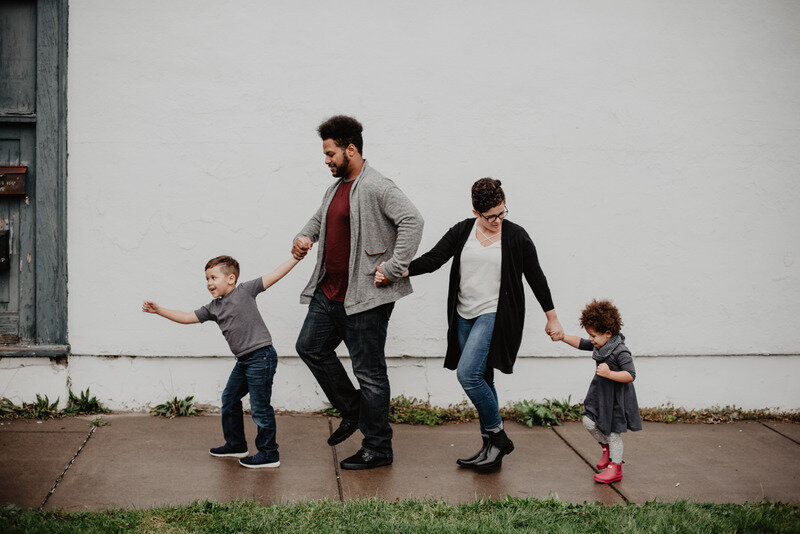
First of all, thank you so much to ALL OF YOU who are responding to the blog posts and newsletters – I truly love hearing from each of you! I’m going to incorporate all of your questions throughout this series but especially during Week Five – Reader Spotlights and Questions. So keep them coming!!
Special Note: Watch out below for special shout-outs to some of you who’ve already submitted questions! Woot! Woot!
Second, did you do your homework? If you’re like me, then you probably put it off a bit. I encourage you to review Week One and begin thinking about discipline with our new reframing tool.
Finally, I promised you some more great content; and today we’re covering Neurobiology and Discipline. I know, sounds heavy and maybe… boring? But hang in here with me.
When we think about discipline, there are a few goals that I want you to keep in mind. From their book, No Drama Discipline, Bryson and Siegel point out 5 goals to keep in mind when thinking about discipline – here they are with Dr. Amy insights and examples.
Five Goals of Discipline
-
Discipline should be intentional. What this means, is that we need to have a goal or outcome in mind. I find, the most helpful way to be intentional about discipline is to ask myself, “What do I want my child to learn from this encounter?” So, for instance, Mary U (one of my blog-lovers) asked about ways to talk to kids & parents about screens and setting boundaries – great question Mary! If I’m intentional about this, I’m going to ask myself, “What do I want my kids to learn about screens? If I remove screens, how will this affect them?” If you’re like me, you want your kids to learn how to set their own boundaries, take breaks, and not consume too much; but rather balance their screen time with books, being outdoors, and hanging out with friends. Right?
-
Discipline should look beyond behavior. We often get stuck and focus on our children’s behavior (I know! They’re annoying and not likeable all the time, that’s ok to admit!) But usually, there’s something that’s triggering or guiding or some context that will explain the behavior. Again, I want to ask myself, “What else is going on here with my child’s behavior? Why are they engaging this behavior? What are they trying to communicate?” Let’s go back to Mary’s concern over screens. My best guess is that most children and teenagers use screens as a way to pass time, social networking, because it’s fun, and because it’s like crack for their brains!! Also, many kids and teens use screens, especially social media, because it’s a critical way they connect with friends in a fast-paced world. So, it’s important to ask ourselves, what else is going on with a given behavior – look beyond the behavior for answers.
-
Discipline should teach skills. Check. Done. We just reviewed that last week, aren’t we amazing??? Here it is, if you missed it.
-
Discipline should be relationship-driven. What does this mean? Well, it doesn’t mean threatening your relationship with your child when they misbehave. What it does mean is that talking with your child about behavior can be seen as a way to connect and re-direct them towards better choices. Let’s use an example from Lauren S (another blog-lover!). Lauren said that it’s hard to get her child to engage in independent skills such as getting dressed or brushing her teeth – even though she knows she can do these things on her own. We feel you Lauren! Lauren – there are A LOT of things I can do on my own, but I’d rather do those tasks with other people. In other words, I wonder if your daughter simply wants your company? Maybe your family has been rushed lately; or perhaps your daughter is keeping up with an older brother who outpaces her? Here’s what I might try that uses that tactic of “connect and re-direct” by Dan Siegel. Try saying, “Sweetie, if you get dressed, that gives us more time to snuggle before school.” Or, “I bet if you set that timer and brush your teeth, we’ll have time for 3 books tonight instead of 2!” Or you can also try, “I’d love to help you do that, but I need to get some other tasks done. Maybe when we’re both dressed, we can have breakfast together?” In other words, focus on connection but still lay out the expectation that you want her to try a task.
-
Discipline should focus on regulation over compliance. Here’s where we get to be a little nerdy with neurobiology! First, what the heck is regulation? Regulation, simply put, is how we manage our arousal and impulses and how that, in turn, effects our behavior and expression of emotion. For instance, when someone says something hurtful to me, of course my first impulse is to hurt him/her back and I definitely feel upset and angry (aroused). But because I’m “regulated,” I take a step back and decide how I want to respond to that person. Easier said than done, right?
Regulation – Let’s Dig IN!
This is my point friends, regulation or being self-regulated is NOT easy; and it’s a learned behavior that takes time and practice. But, before our children become self-regulators, we must first… co-regulate. Guess who we co-regulate with? Yep, our kids.
What is Co-regulation?
Co-regulation is regulating (or responding to our arousals and impulses) with another person, usually our children. It’s co-occurring. Often, co-regulation is non-verbal and done through “how” we talk, what our eyes say, what our bodies say, our tone, our presence, and how we emphasize things we are saying. It communicates safety and security or fear and shutting down. Here are some examples of non-verbal ways we co-regulate: singing, humming, rocking, holding, bathing, and playing. Our children learn from us from the time they are born, how to regulate behaviors and emotions. We show them every day how to handle stress, emotional upset, frustration and disappointment. They regulate based on how well we regulate. And when they cannot do it on their own, it’s our job to help.
Why does this matter?
When our kids are misbehaving, they simply are not regulating their behavior. If they were regulated, they often would not engage in behavior that we dislike or seems out of control. So, our job, when our kids misbehave, is to help them regulate versus comply.
Also, when our kids are being punished, or forced to comply, they will often enter a state of fear or shutting down (called freezing) and their brains simply cannot learn in this state. They won’t learn what we want them to about their behavior.
Let’s Review
Let’s think about Mary again. Mary wants parents that she works with to know that setting limits on screens is important. First, in order to do that, parents have to know what their goal is for screen use in their home. Second, they have to look at what else is happening that is driving screen use. Boredom? Socialization? Stimulation? Lack of limits? Parental modeling? Next, we need to teach our children the skill of setting boundaries around screens, modeling times we have screen-free zones, and asking them how to shut off notifications and join family time. Also, we must focus on “why” – and that’s about relationships – we want our kids to have healthy screen limits because it helps them be social with people around them and create meaningful connections. And finally, we must model all of this ourselves (co-occurring or co-regulating) with our children.
Whew! This was a doozy!! Lots of information to process. And it’s not easy. It’s a new way of thinking about behavior and discipline. But we can all get better with greater intention. And when we’re more purposeful about our approach to children’s behavior, we gain more meaningful connection.
That’s a wrap folks! Thanks for learning together.

